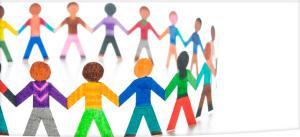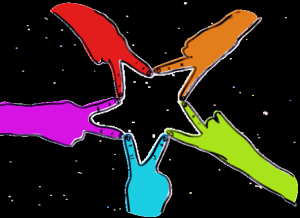
I like circles.
I like the way they bring people closer together, not only in physical proximity, but in emotional connection. Circles are comfortable shapes for people because they can see everyone else, but they can still have their own space.
I’m writing this post because I truly believe in the power of circles and I think they should happen in every community, especially schools. I learned about them through Restorative Practices and The Restorative Justice Project.
When I began working at my school four years ago, I observed a “Community Circle” facilitated by a School Counselor colleague in a neighboring elementary school. While sitting in the circle with about 20 fourth and fifth graders, I heard the following from a fifth grade student: “So, guys, listen. I feel like the fifth graders have been talking too much about our overnight fieldtrip that we get to do. I’m worried that we might be making the fourth graders feel sad because they don’t get to go with us. Maybe we should stop talking about it so much. I’m sorry if we have made any of you feel bad.”
Wow. I remember feeling blown away at the compassion and empathy pouring out of the kids around the circle. Ever since, I’ve been sold on the power and importance of Community Circles!
In my own school, I started facilitating these circles three years ago. The growth I have seen in my students is heartwarming and inspiring. For me, it feels like that ‘missing link’ that my students were not getting from other lessons or activities.
So what is Community Circle? It looks a little different in each classroom. With my third-fifth graders, it looks like a big oval of kids plus me, speaking and listening to each other. We use our Community Circle time to give each other meaningful compliments, genuine apologies, and to help each other problem-solve and work through concerns happening in our community.
A couple things make this work: One, we use a ball for a ‘talking piece’ to allow everyone a chance to share their voice, and two, we have ‘agreements’ that we all agree to do our best to follow, in order to make our circle a safe and respectful place.
I prep each class in the beginning of the school year by reviewing feelings, I-messages, apologies, problem-solving, etc. Then, each time I’m in a classroom for guidance, the students are basically in control of what they do with the time! Everybody has a chance to recognize a peer in a positive way, right any wrongs, or resolve conflicts.
Here is some awesomeness that has come out of Community Circles in the last two years. (All names have been changed.)
- In a third grade class, a boy had been targeted for ‘annoying’ several others by making noises during class. One girl decided to stick up for him by saying this in the circle: “I feel like Bob and Dave have been a little sensitive to Dale’s noises. Bob and Dave, instead of getting so mad that he makes noises, maybe you should try and ignore it. It’s not that big of a deal.”
- In a fourth grade class, a situation in which a boy was trying to help a friend during math turned into cheating. Several classmates started blaming the boy, who got very upset with himself. The next day, we had a circle to talk about the incident, in which the boy explained: “Yesterday, I was trying to help Matt on his math. I didn’t like it when a whole bunch of you got mad at me for trying to help. It made me feel very sad, like you all hated me. Next time, I don’t want you to yell at me.” Other students began apologizing, and the boy felt supported by his classmates.
- In a third grade class, a girl talked about how a friend on the bus had started ignoring her, so she felt left out. After hearing several suggestions on what she could try, a boy said to her: “I take your bus and you can always sit with me.”
- In a fifth grade class, several boys and some girls were talking about a conflict on the kickball field, in which fairness about teams was the topic. Helpful suggestions included: “Maybe you could bring everyone who wants to play together, and then put people on teams by numbers or have the team captains choose until the teams are even. Also, the PE teacher could help out there.”
- In several classes, this compliment has been given: “So-and-so, I really like when we are working in our classroom, you stay quiet so others can get their work done.”
- In many classes, I’ve heard this about several kids: “So-and-so, I think it’s really cool that you let everyone play with you. Even if the game has already started, you don’t exclude anyone.”
Seriously, how awesome is this stuff?! What is so great is that once students are comfortable using the Community Circle procedure, we can use the circle for more serious issues that may come up. We can do a problem-solving circle for a specific concern that affected the class community, to help everyone repair harm that may have been caused, and to help everyone heal and move on.
While Community Circles are still new to my school, I am confident that the benefits of consistent circles will make them an integral part of my school’s culture.
If you’re interested in more information about facilitating circles, check out these documents:
Overview of Restorative School Practices Model
Agreements
If you facilitate Community Circles at your school or are interested in learning more, let me know!


